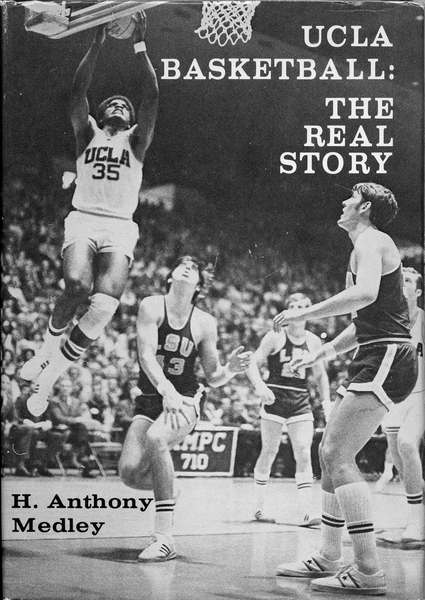|
Out of print for more than 30 years, now available for the first time as an eBook, this is the controversial story of John Wooden's first 25 years and first 8 NCAA Championships as UCLA Head Basketball Coach. This is the only book that gives a true picture of the character of John Wooden and the influence of his assistant, Jerry Norman, whose contributions Wooden ignored and tried to bury. Compiled with more than 40 hours of interviews with Coach Wooden, learn about the man behind the coach. The players tell their stories in their own words. Click the book to read the first chapter and for ordering information. Also available on Kindle. |
|
Sports Medley: Go for Two? 2 Oct 16 It’s not just baseball managers who don’t understand their sport. Football coaches get all bamboozled when it comes to the decision of whether to take the one point conversion or to try for two. Perfect examples of this occurred in the Tampa Bay-Rams game of September 25. With 8:55 left in the game with the Rams leading 31-26 just after Tampa scored a touchdown, Tampa Coach Dirk Koetter went for two in order to bring them within a three point field-goal of the tie, which seems reasonable if one doesn’t consider all the possibilities. If they only go for one point, while it leaves them four points behind, they will still be within a seven point touchdown if their opponent kicks a field goal. However, if they go for two, which they did, and fail, which they did, they are behind by five points and if their opponent kicks a field goal they will be eight points behind and will have to score a touchdown and a two-point conversion to tie the game. Further, if they don’t make the two-point conversion, which they didn’t, if they then score a touchdown and kick a one point conversion, their opponent, the Rams, would only be two points behind and could win the game with a field goal. If, however, they take the one point conversion and then score a touchdown, the Rams could only tie them with a field goal. The correct decision is to take the one point conversion. It happened that the Rams scored a touchdown to go ahead 37-26, an 11 point lead with 4:38 left in the game. This gave Rams coach Jeff Fisher the opportunity to show that he was even more clueless than Koetter. Why? Because he went for a 2 point conversion! What in the world could be going through Fisher’s head? At 37-26 they are ahead by 11 points. That means that Tampa could tie the score with a field goal, touchdown, and two point conversion. If the Rams just kick the one point conversion, the only way Tampa could prevail would be to score two touchdowns because they would be behind by 12 points, 38-26. 11 points is reachable with a 6 point TD, a 2 point conversion and 3 point field goal. If the Rams just kick the one point conversion to make the score 38-26, that’s a 12 point lead, unreachable without two touchdowns. So going for two points here is foolish because the extra point means absolutely nothing. But that’s what the Rams did. Jeff Fisher is paid $7 million a year to make these kinds of decisions. At least Koetter had a reason to try for two (putting them within a 3 point field goal of a tie). Fisher had no reason whatsoever, except that he doesn’t understand basic math and can’t see the forest for the trees. It all depends on what the definition of “is” is: Here’s what Thom Brennanam, Fox Sports play by play man for the Rams-Cardinals Game, opined Sunday, “Of the three time outs the Rams started this half with, they have lost two challenges; they have lost two timeouts in a 10-10 game with 8 ˝ minutes to go. So they are now, officially, finished. They have one left.” The definition of “finished” is, “having no further prospect of success or development.” Can someone be “finished” if they have one left? And, if they were “finished,” how could they end up winning the game 17-13? Going one step further, if a team is “finished” when it runs out of challenges, why do they continue playing the game? Another opportunity for the Angels: The Angels’ brilliant front office paid more than a third of a billion dollars to sign washed-up stars Josh Hamilton and Albert Pujols to multi-year contracts. The Cardinals, who made Pujols available by refusing to sign him for 2012, now offer another opportunity, Matt Halliday, who is coming off his worst year, hitting .246, for which he is paid $17 million. The Cardinals are going to buy out his 2017 contract for $1 million. Halliday indicates he wants to keep playing. I bet the Angels could get him for five years (he’s 36) for $50 million. He’d be a perfect backup for Pujols, who has averaged .266 for his 5 Angels years (vs .328 for 11 Cardinal years) to ensure the Angels stay in the cellar and lose Mike Trout when his contract is up after the 2020 season. |
|
|
